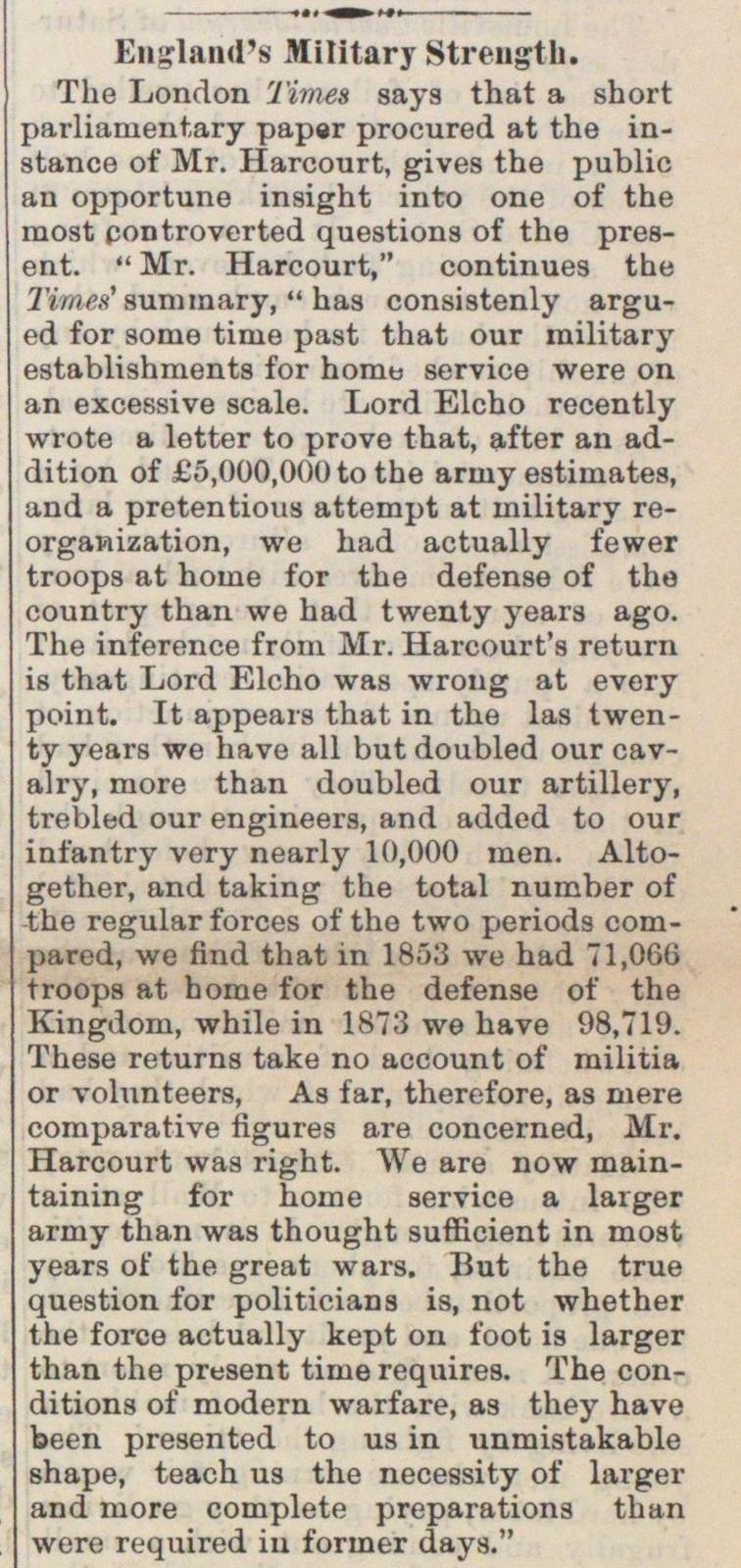England's Military Strength

The London Times saya that a short parliamentary papar procured at the instance of Mr. Harcourt, gives the public an opportune insight into one of the most pontroverted questions of the present. " Mr. Harcourt," continúes the 2'irc' summary, " has consistenly argued for some time past that our military establishments for home service were on an excessive scale. Lord Elcho recently wrote a letter to prove that, after an addition of L5,000,000 to the ariny estimates, and a pretentious attempt at military reorganization, we had actually fewer troops at home for the defense of the country than we had twenty years ago. The inference from Mr. Harcourt's return is that Lord Elcho was wrong at every point. It appears that in the las twenty years we have all but doubled our cavalry, more than doubled our artillery, trebled our engineers, and added to our infantry vory nearly 10,000 men. Altogether, and taking the total number of the regular forces of the two periods compared, we find that in 1853 we had 71,066 troops at home for the defense of the Kingdom, while in 1873 we have 98,719. These returns take no account of militia or volunteers, As far, therefore, as mere comparative figures are concerned, Mr. Harcourt was rieht. We are now taining for home service a larger ariny than was thought suffioient in most years of the great wars. But the true question for politicians is, not whether the force actually kept on foot is larger than the present time requires. The conditions of modem warfare, as they have been presented to us in unmistakable shape, teach us the neeessity of larger and more complete preparation3 than were required in foriner days."
Article
Subjects
Old News
Michigan Argus